Measurement and modeling of soil moisture changes for subsurface drained and subirrigated fields in the Red River Valley
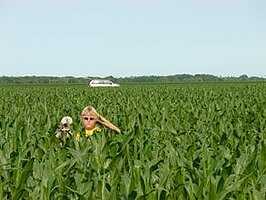
Kyle Horntvedt is a M.S. student in Agricultural and Biosystems Engineering (ABEN) at North Dakota State University (NDSU). He graduated with his B.S. degree in Civil Engineering (CE) in May 2012 from NDSU, with a focus in water resources. Currently, Kyle is working on research under Dr. Xinhua Jia of NDSU-ABEN, on a project funded by the USDA-Sustainable Agriculture and Research Education (SARE) grant. The project, titled the “Effect of optimal water management for sustainable and profitable crop production and improvement of water quality in the Red River Valley”, focuses on subsurface drainage and subirrigation at the field scale.
Kyle began working for the ABEN department in the fall of 2011 during his senior year at NDSU. While working as an undergraduate, Kyle became particularly interested in this project because of his agricultural background and his drive to improve agriculture in the future. After joining the department in May 2012, he chose his thesis topic “Measurement and modeling of soil moisture changes for subsurface drainage and subirrigated fields in the Red River Valley”, where he is looking into the change in soil moisture due to subirrigation, and the accuracy of two soil-water simulation models, Hydrus-2D and DRAINMOD. Through his research, he hopes to show the direct benefit to optimum soil moisture management thought subsurface drainage and subirrigation as related to potential crop yield increases, along with validating two models for soil moisture estimation for these practices.
701-368-2915
Kyle.Horntvedt@my.ndsu.edu
Fellow: Kyle L. Horntvedt
Advisor: Xinhua Jia, Ph.D., Assistant Professor, Agricultural and Biosystems Engineering, North Dakota State University
Degree Progress: M.S. in Agricultural and Biosystems Engineering Expected December 2014
Measurement and modeling of soil moisture changes for subsurface drainage and subirrigated fields in the Red River Valley
Agricultural drainage water management (DWM) is one of the biggest challenges producers face currently. During wet periods, excess water must be removed from fields to promote healthy plant development. Conversely, during drought periods, crops need additional water to be supplied in order to achieve desired yields. Through the removal or addition of water with subsurface drainage or subirrigation, producers will be able to effectively manage their water tables and available water content to their plants, adding security to crop yields regardless of weather conditions. It is estimated that 10 million ha in the United States and Canada are suitable for DWM, with their average land slopes being less than 0.5%. The majority of the RRV falls within these 10 million ha, making it a prime location for implementation of DWM practice.
In order to accurately understand when water should be removed and added to the fields to optimally manage water tables and moisture content, researchers must gain an understanding of how water moves through each field and how the soil moisture changes in the root zone, in order to develop a water management plan for producers to follow. A large field experiment with four water management plans has been set up in the RRV and is scheduled to run in 2011 - 2014. Various instruments have been installed to measure the water balance components. To predict the effects of water management on water table position and soil moisture for a region, hydrological simulation models are required, such as Hydrus-2D and DRAINMOD. By measuring real-world moisture conditions in the field and comparing them to modeling results, a water management plan and irrigation schedule will be able to be developed to help producers make critical decisions throughout the year regarding the addition and abstraction of water in their fields.
Project Objectives:
The research project will focus on measuring the input parameters for DRAINMOD and Hydrus-2D models for four different DWM practices, and comparing the observed field response with the simulated field response for each practice. The specific objectives are to:
- Gather field data to be inputted to the Hydrus-2D and DRAINMOD during 2012-2013 (Rainfall events, soil properties, tiling system specifications, irrigation water quantities, geographical features, etc.).
- Simulate water movement in the field under different rainfall events and for the entire growing season.
- Conduct statistical analysis on the models’ accuracy in modeling real field conditions, specifically the change in soil moisture in the root zone.
Progress:
The drain tile system was installed in the fall of 2010, and retrofitted to accommodate subirrigation and controlled drainage in the fall of 2011 with a header line and summer of 2012 with a pump, tank, and manifold. Water level observation wells, soil moisture sensors, and rain gauges were installed in the fall of 2011. Weather stations and additional soil moisture sensors were installed in each field in the spring of 2012. V-notch weirs were installed in the fall of 2012 to measure surface runoff during spring runoff and large rainfall events.
Due to the extremely dry summer and the learning process of the first season of subirrigation, no change in water table was noticed during the 2012 growing season, and all water applied was used by the crops. It is believed that with proper drainage water management in fall of 2012 and winter of 2012, and immediate pumping of subirrigation water in the spring of 2013, water table and soil moisture in the root zone will increase, resulting in increased ET, and therefore potentially higher yields will be seen.
Prior Work in this Area:
Jia, X., T.M. DeSutter, Z. Lin, W.M. Schuh, and D.D. Steele. 2012. Subsurface drainage and subirrigation effects on water quality in southeast North Dakota. Transactions of the ASABE 55(5): 1757-1769.
Rijal, I., X. Jia, X. Zhang, D. D. Steele, T. F. Scherer, and A. Akyuz. 2012. Effects of subsurface drainage on evapotranspiration for corn and soybean in Southeast North Dakota. J. of Irrigation and Drainage. doi: 10.1061/(ASCE)IR.1943-4774.0000508.
Zhang, X., X. Jia, J. Yang, and L. Hu. 2010. Comparison of sensible heat flux measured by eddy-covariance and large aperture scintillometer over a corn field with subsurface drainage. Journal of Agricultural and Forest Meteorology 150:1182-1191.
Scherer, T. F., and X. Jia. 2010. A simple method to measure the flow rate and volume from tile drainage pump stations. Applied Engineering in Agriculture 26(1):79-83.
Jia, X., M. D. Dukes, and J. M. Jacobs. 2009. Bahiagrass Crop Coefficients from Eddy Correlation Measurements in Central Florida. Irrigation Science 28(5):5-15.
Rijal, I., and X. Jia. 2012. Reference evapotranspiration and actual evapotranspiration measurements in North Dakota. ND Water Resources Research Institute Technical Report No: ND12-02. www.ndsu.edu/wrri/Ishara%20Xinhua%20FinalReport.pdf. Fargo, ND. p30.
Kyle will be writing a paper and creating a poster titled “Methods, techniques and considerations for subirrigation practices in the Red River Valley of the North” for the American Society of Agricultural and Biological Engineer’s conference in Kansas City, Missouri on July 21-24, 2013.
Conference/Seminar Presentations:
Horntvedt, K.L., X. Jia, D.D. Steele, T.F. Scherer, and T.M. DeSutter. 2013. Methods, techniques, and considerations for subirrigation practices in the Red River Valley of the North. ASABE Paper No. 131618357. Kansas City, Misso.: ASABE
Thesis Title:
Measurement and modeling of soil moisture changes for subsurface drainage and subirrigated fields in the Red River Valley
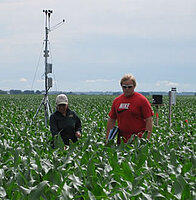
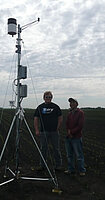
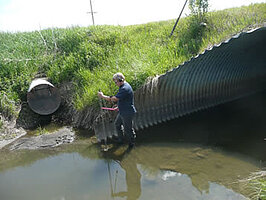
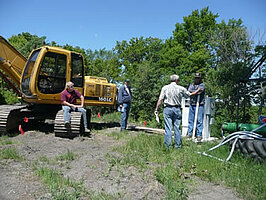
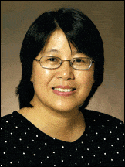
Xinhua Jia, P.E., Professor
Morrill Hall Room 204
Department of Agricultural and Biosystems Engineering
North Dakota State University
NDSU Dept. 7620PO Box 6050
Fargo ND 58108-6050
Phone: (701) 231-6453
E-mail: xinhua.jia@ndsu.edu


